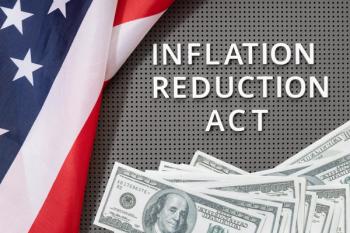
Payers to Increase Utilization Management if the IRA Leads to Higher Costs
In a recent survey, payers said their priorities include addressing the impacts of Medicare’s Drug Price Negotiation Program and the Part D redesign.
Payers are considering several changes to their Medicare plans for 2025 and 2026 to address rising costs they expect to result from the Inflation Reduction Act (IRA). These include favoring more generics and biosimilars, increasing use of prior authorizations for Part B products, and scaling back enhanced benefits, according to a new survey by Magnolia Market Access, a market research consultant for pharmaceutical companies.
But also mentioned as possible by payers was increasing formulary exclusions, delaying prior authorizations, delaying prescription fills and removing electronic prior authorizations.
“Payers are telling us they going to do more of the same with prior authorizations, benefits, quantity limits, but they are going to get a little bit more creative,” Amanda Forys, partner at Magnolia Market Access, said in an interview. “E-prior authorization is something that’s come up in a lot of our interviews, where the payers are going to look more closely at requests that are not complete. They are going to be looking at all the things that add layers of administrative work.”
Magnolia Market Access conducted a web-based survey of 23 medical and pharmacy directors from payers and PBMs, including 13 from national companies and 10 from regional companies. They also conducted interviews with 11 medical and pharmacy directors from national/regional payers, PBMs, and IDNs and actuaries from consultancies. Nine of these interviews were those from payers and PBMs representing in total about 200 million lives.
This is the
Additionally, earlier this year, payers expressed concern about whether utilization management tools could address the potential of rising costs associated with the IRA requirement that plans provide coverage for all drugs and all dosage forms when the negotiated prices go into effect in 2026.
While these are still concerns among those in the current survey, plans and payers are now also focused on meeting the IRA’s requirements for the Medicare Prescription Payment plan and for the $2,000 cap on out-of-pocket costs for Part D plans.
The Prescription Payment plan has received less media attention, but has become top of mind now that the U.S. Department of Health and Human Services has released the second of its two guidances for the payment plan.
The Magnolia survey found that 86% of payers believe the payment plan will be an administrative burden. Beginning in 2025, people with Medicare Part D drug coverage will have the option to pay out-of-pocket costs in monthly payments spread out over the year.
Sponsors will be required to notify both patients and pharmacies with information about who meets a $600 out-of-pocket threshold based on a single prescription at the point-of-sale. Additionally, plans are required to make notifications during the coverage year.
Forys expects that payers will follow the guidances for the payment program, but they’ve expressed concern about what this means. About half of payers said they would likely seek additional rebates from pharmaceutical companies if patients default on payments. “There is a risk that we’re going to start seeing patients default on payments,” she said. “Payers are going to have to deal with this through billing. It’s an operational hassle for them to deal with.”
She said there is no incentive for payers to go beyond the guidances to provide patients with education programs about the payment plan or other measures of the IRA. “The onus will be on pharmaceutical companies and patient groups to do that.”
Regarding Medicare’s drug price negotiations, 48% of the payers in the current survey said they would consider using the maximum fair price for Medicare to drive negotiations for their commercial plans and for competitor products in a class. Additionally, plans aim to increase the use of generics and biosimilars and limit other options in negotiated classes as a way to lower net costs.
Changes in the use of utilization management tools are planned as well, with 96% of payers increasing this mechanism for high-cost products, the Magnolia survey found. This includes using step edits or generics first, increasing management of high-cost specialty products and those for rare diseases, including use of prior authorization and increasing clinical requirements to justify medical necessity. Some payers (38%) plan to go further, delaying prescription fills, implementing prior authorization delays and eliminating electronic prior authorization.
“There are unintended consequences that are going to affect patient access to the number of products available,” Forys said. “I understand why payers are doing this. They’re going to have to put money out. The IRA had good intentions, but it only chips away at certain parts of the problem in the supply chain. A lot of people don't understand the intricacies of where the dollar goes to really know how to solve the problem.”
Forys said many people had expected there to some movement on PBM reform by the time these IRA measures went into effect. “No matter who the administration is next year, PBM reform is going to be a hot button issue.”
Newsletter
Get the latest industry news, event updates, and more from Managed healthcare Executive.






















































